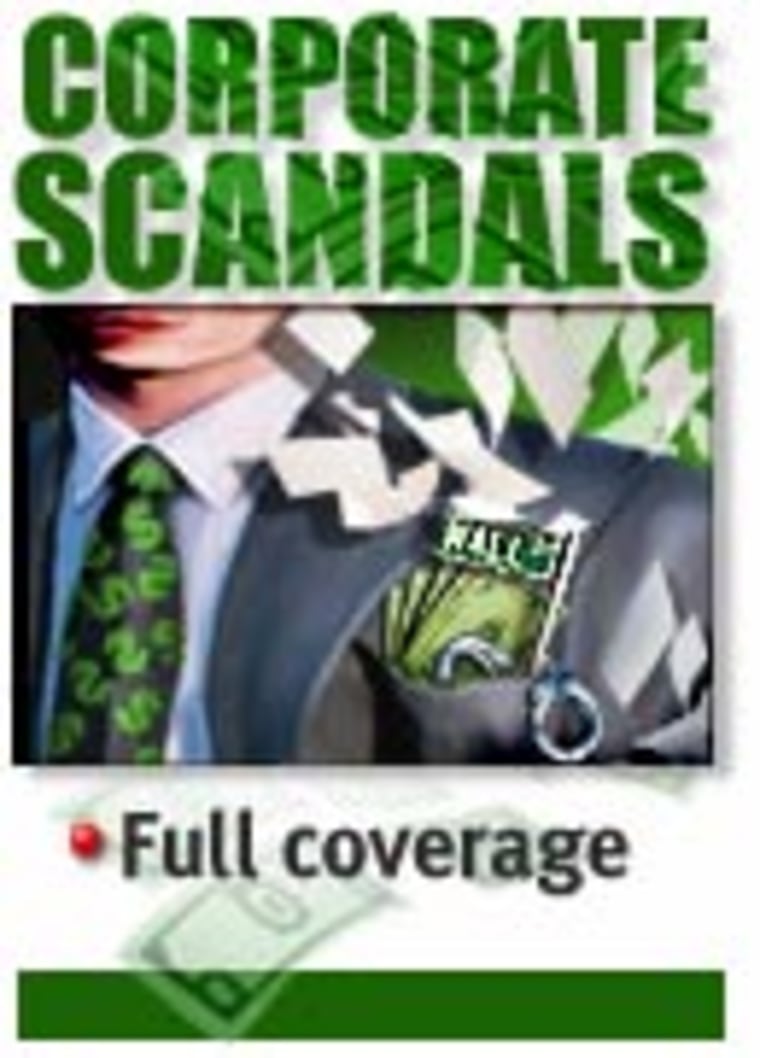After investors collectively lost huge sums, Wall Street’s biggest firms have agreed to pay $1.4 billion to settle charges that they touted stocks in research reports to help win investment banking business. Relatively little of that money will go to pay investors who lost money. But the settlement is expected to unleash a flood of lawsuits on behalf of investors looking to get their money back.

THE $1.4 BILLION includes some $487.5 million in fines and $387.5 million in profits that the 10 firm involved in the settlement agreed to give up. About half of that $775 million will be put into a fund to pay a limited number of claims, according to Securities and Exchange Commission Chairman William Donaldson.
“A fund administration will be appointed to allocate funds to individual customers of each firm based primarily on whether each customer purchased any of the limited universe of securities identified in the commission’s complaint,” Donaldson told a press conference announcing the settlement. “The fund administrator’s plan of distribution will be subject to approval by the court.”
Much of the rest of the money will end up in the treasuries of the states that were involved in the investigation into bogus research. The 10 firms that settled will pay another $433 million to buy third party stock research to give investors an independent source of advice. The firms also agreed to pay $80 million for an investor education campaign.
The settlement will also bring about permanent changes in the way Wall Street does business. Analysts will no longer be allowed to attend the so-called “pitch meetings” — in which investment bankers try to win underwriting and other business from companies.
Those reforms will likely be extended to the entire brokerage industry, according to former SEC commissioner David Ruder, who now teaches law at Northwestern University.
“We are probably going to see some SEC rule-making which will impose these separations on the whole industry,” he said. “I think that’s very positive.”
Wall Street’s biggest firms have also agreed to stop giving top corporate clients access to hot initial public offerings — a practice known as “spinning.” But given the dearth of IPOs being floated these days, that concession may be moot.
Though the $1.4 billion in payments represents one the of the largest settlements of its kind, investors get back relatively little of the billions they lost when they bought stocks touted by Wall Street firms, according to Carol Gilden, a partner at the Chicago law firm of Much Shelist, who is heading up several class action lawsuits on behalf of investors.
“What the settlement will accomplish is many things,” she said. “But what it will not accomplish is it will not put money into the hands of the very investors whose trust was betrayed by Wall Street.”
CD-ROM LAWSUITS?

But while the settlement includes relatively little cash for investors, it provides an invaluable resource for anyone wishing to sue. Regulators have made public the blizzard of paper and e-mail messages gathered in the investigation.
That evidence “is a form of government-subsidized research and development for plaintiffs’ lawyers, ” said Henry Hu, a professor of corporate and securities law at the University of Texas. “All these mails are going to be neatly packaged and indexed. All you have to do is stick the CD-ROM in your computer and you have a lawsuit.”
If the stock that ate your retirement fund is not included on that CD, you may have a harder time taking your broker to court. For starters, most brokerage accounts require that investor claims are settled by arbitration. But if the research you relied on came from another firm, you’re free to sue the source of the bogus stock recommendation.
Many investors will likely join one of the dozens of class-action lawsuits underway or expected to be filed shortly. Since the market meltdown, shareholder lawsuits have soared. A report by Stanford Law School found that the numbers of federal securities class actions rose 31 percent in 2002 compared to the year before. Those 224 suits covered stocks representing more than $1.9 trillion in lost market capitalization.
But depending on the number of people joining these suits, the size of individual payouts may be very small, according to Donald Langevoort, former SEC commissioner who now teaches a Georgetown University.
“The class action is a desirable vehicle,” he said. “But the fact that you will get your 28 cents in the mail reflects the fact that it isn’t as strong a case as an individual lawsuit.”
Individual lawsuits, while potentially more lucrative, are more costly and may be difficult to prove. Investors have to show that they lost money because they relied on a specific piece of research that was fraudulent.
“The strongest case is if you have a 99-year old widow who told her broker that he is her only source of investment advice and only wants to invest in the most conservative safe stocks available,” said Hu.
The strongest cases will also likely be those involving several high-profile cases involving the most notorious research analysts identified by regulators, according to securities lawyers. As part of the settlement, former Salomon Smith Barney analyst Jack Grubman was fined $15 million and former Merrill Lynch analyst Henry Blodget was ordered to pay $4 million. The two analysts — who neither admit nor deny wrongdoing — will be barred from the securities industry for life. Regulators also singled out Morgan Stanley for failing to properly supervise Mary Meeker, the firm’s top telecom analyst.

The firms agreeing to Monday’s settlement include Citigroup Inc.’s Salomon Smith Barney unit, Credit Suisse Group’s CSFB, Morgan Stanley, Goldman Sachs, Lehman Brothers, Bear Stearns, UBS Warburg, J.P. Morgan Chase, and US Bancorp’s Piper Jaffray unit. Merrill Lynch agreed to pay $100 million toward investor education and independent research, in addition to a $100 million penalty it agreed to pay earlier.